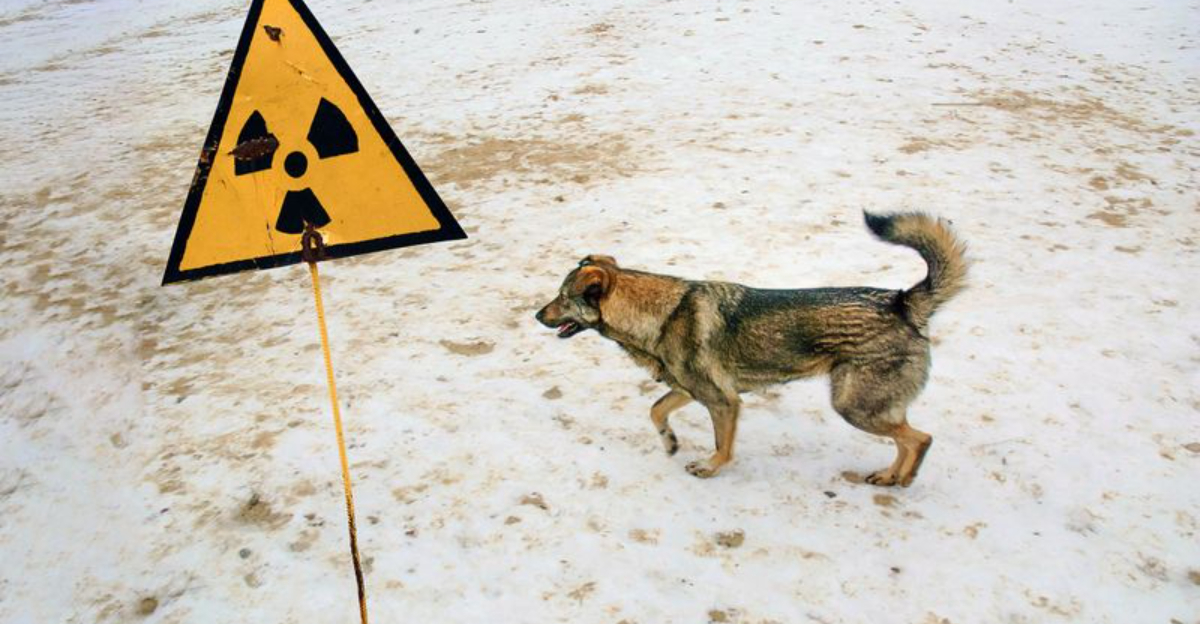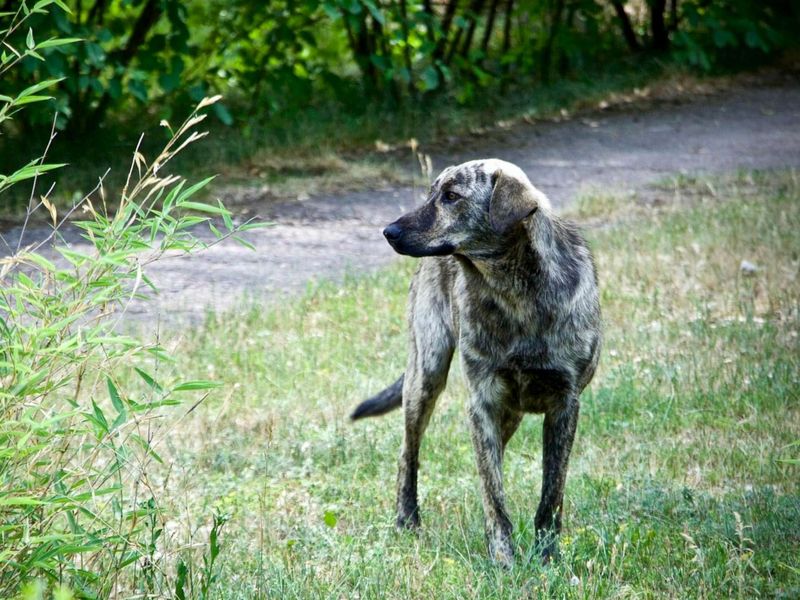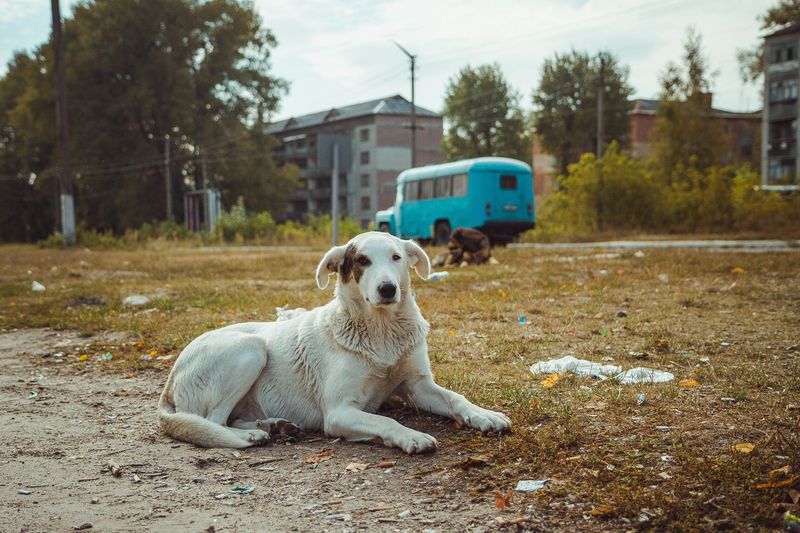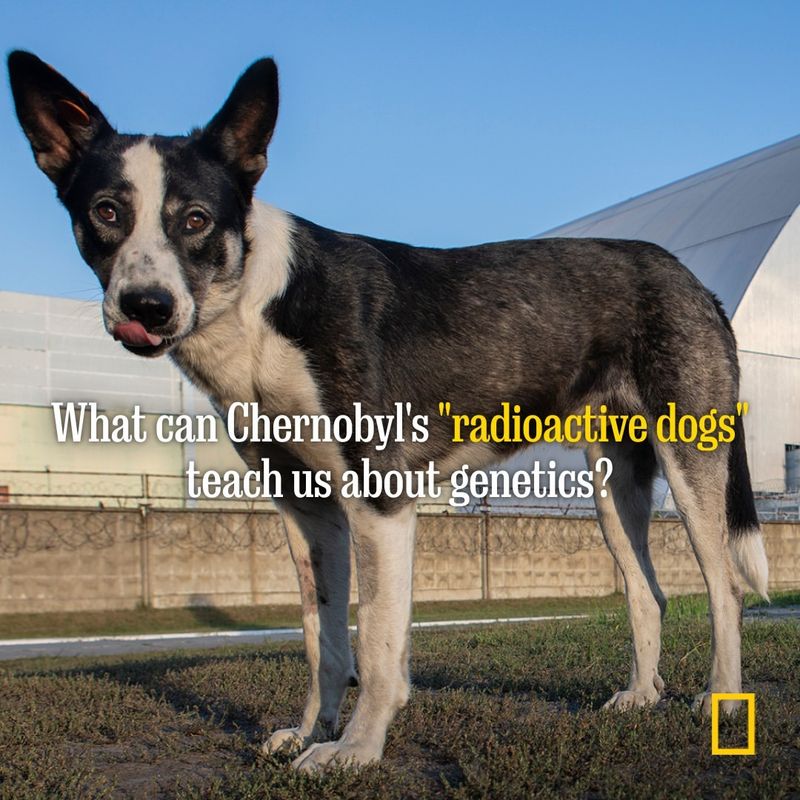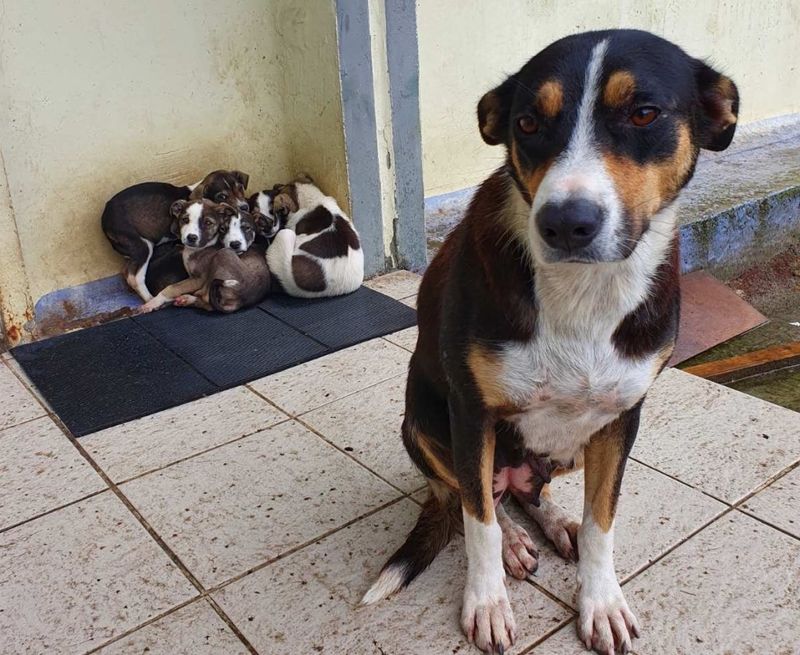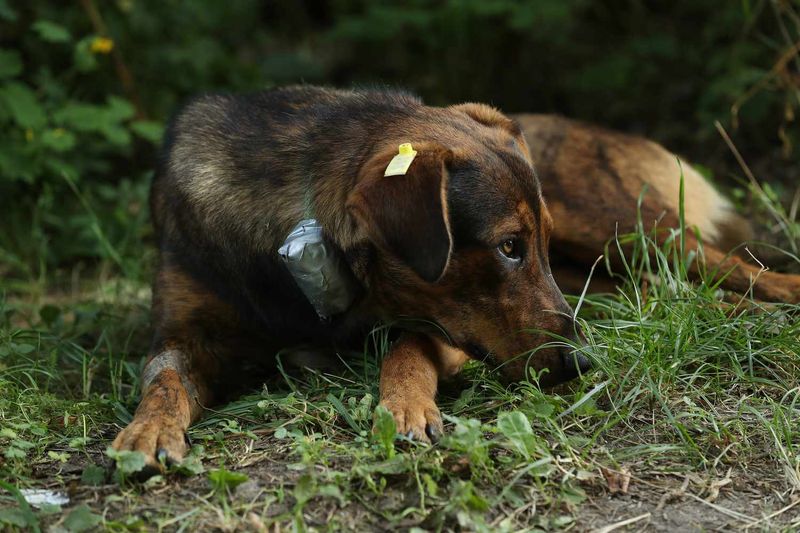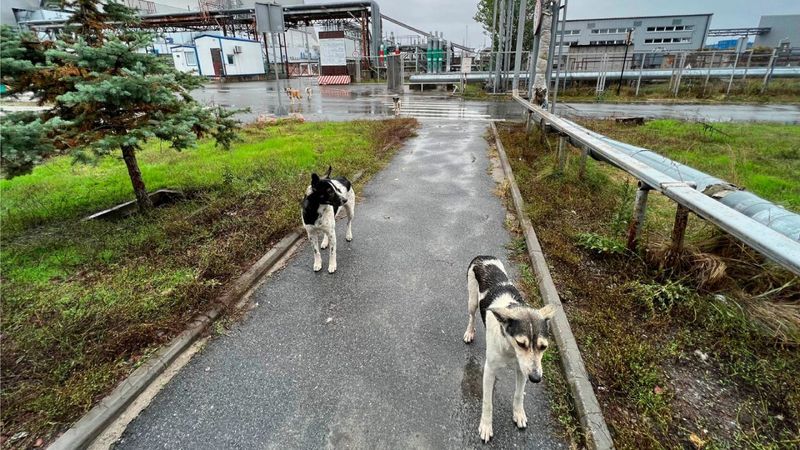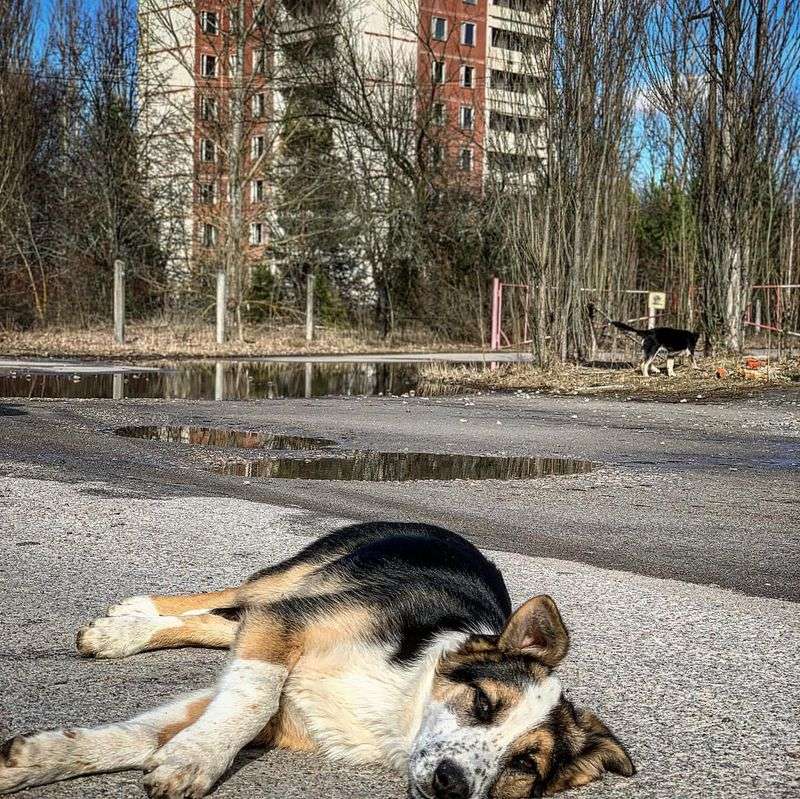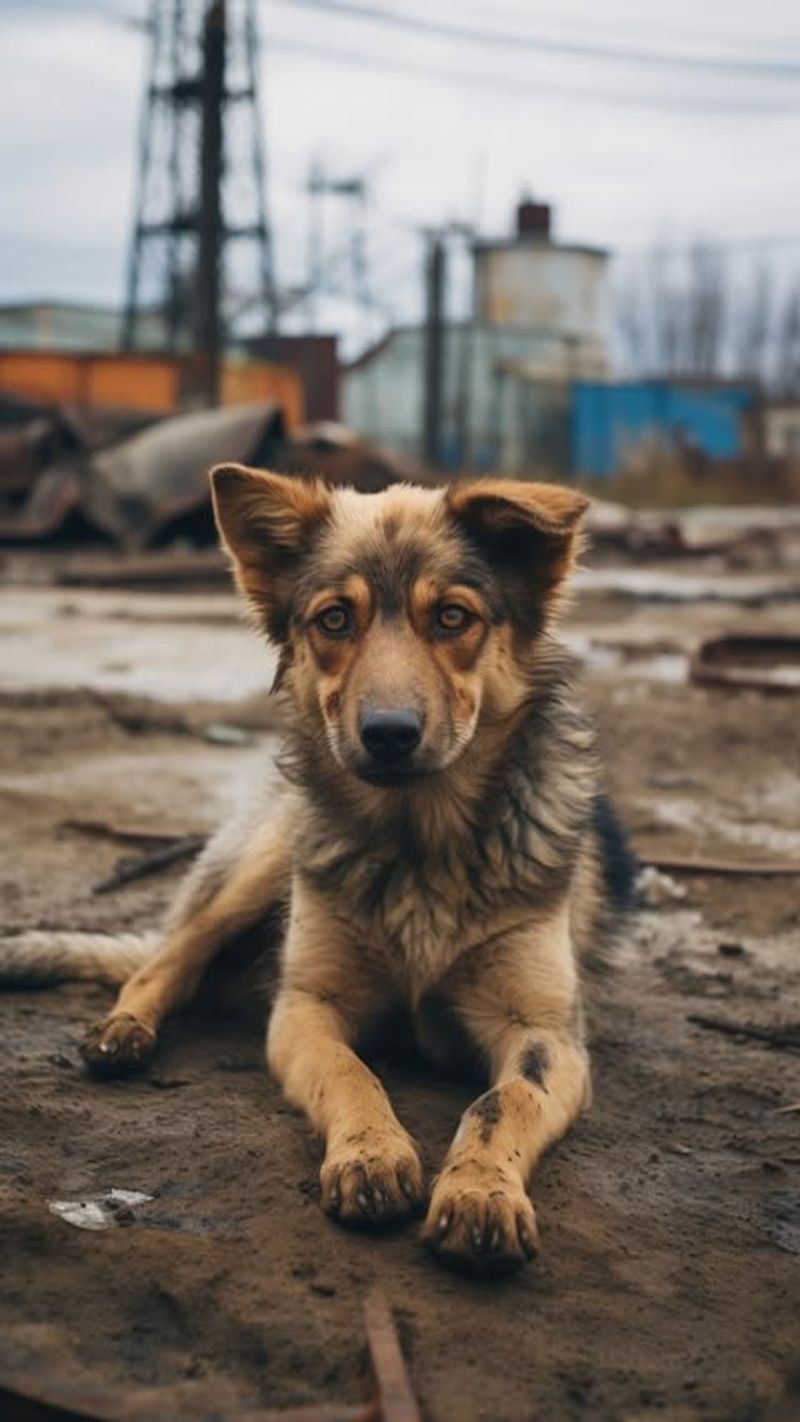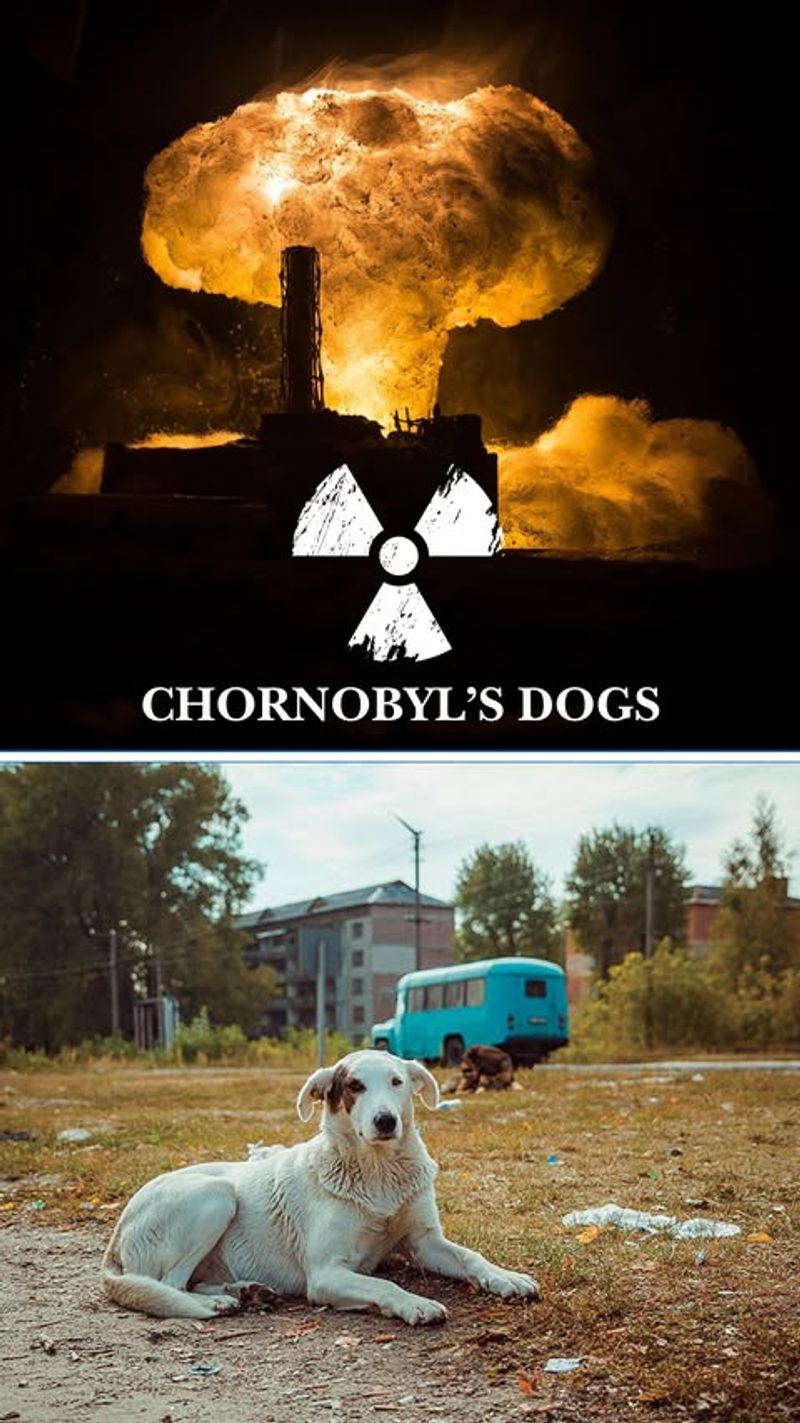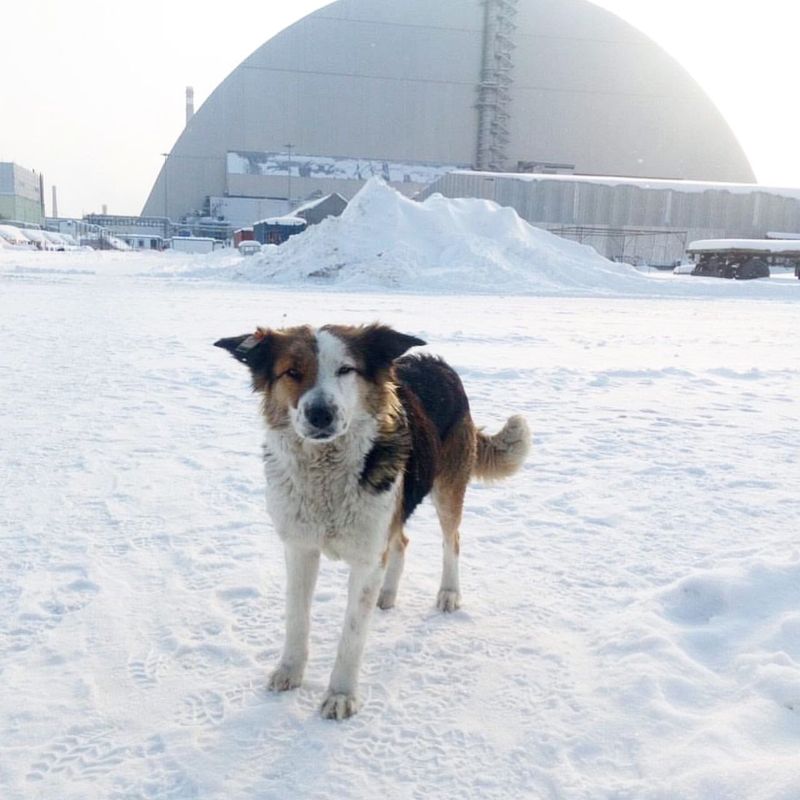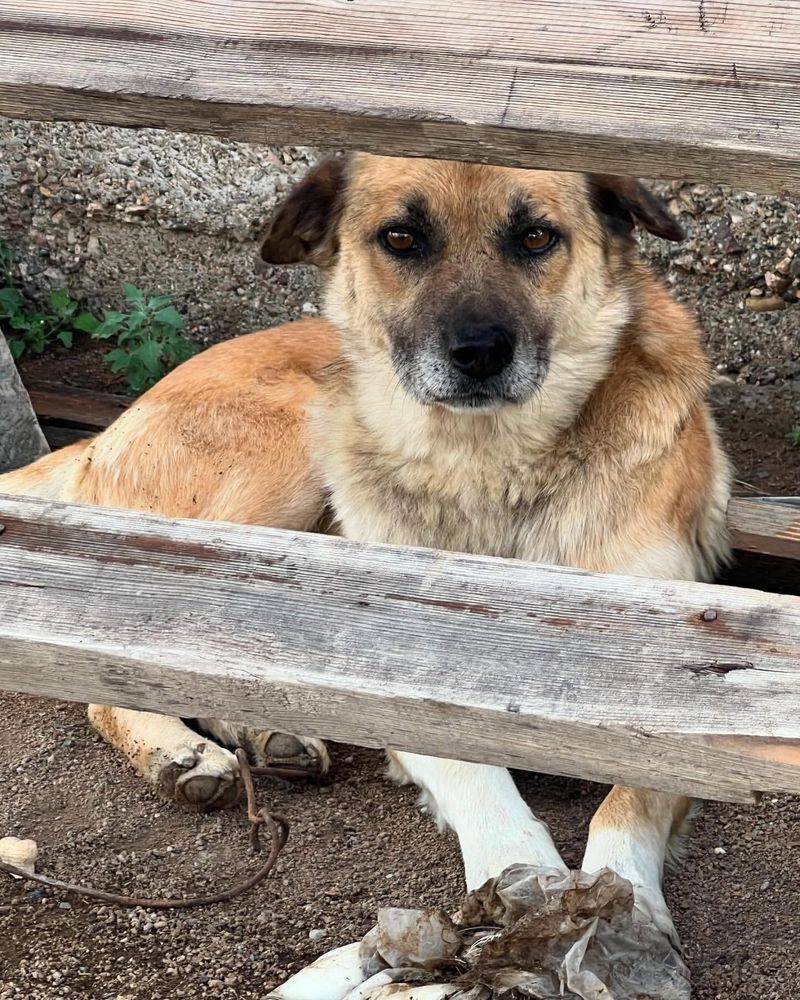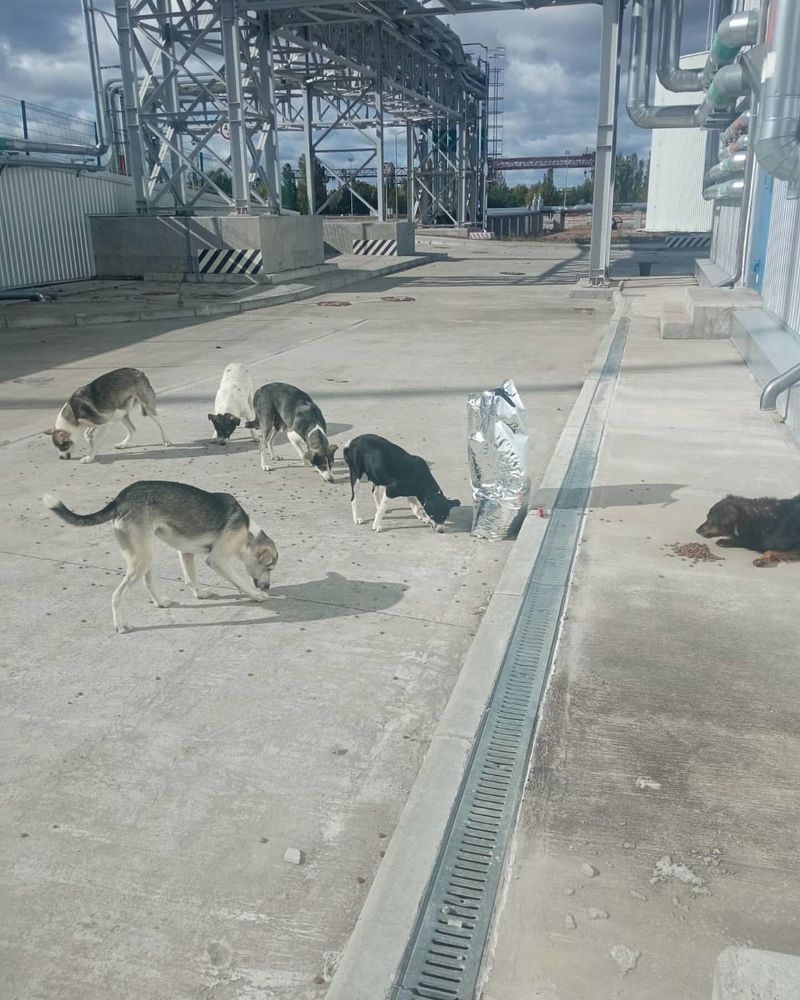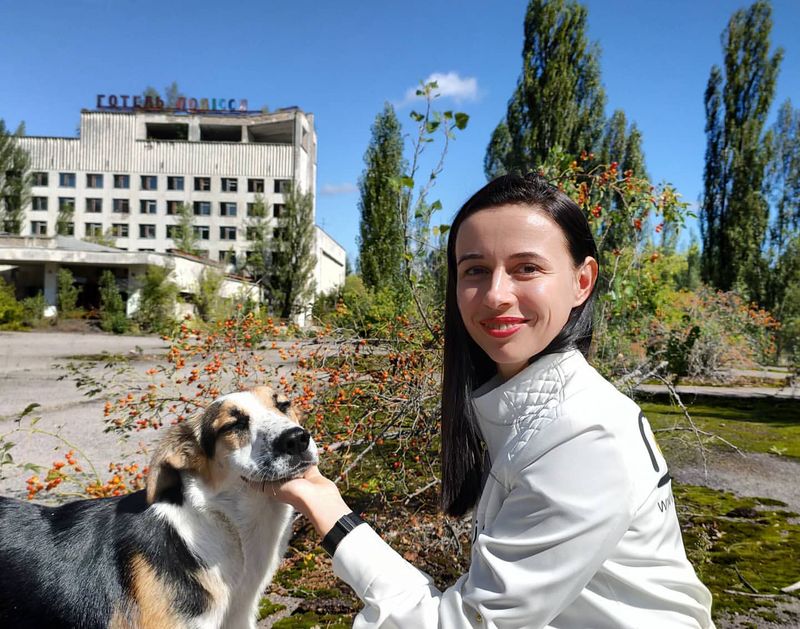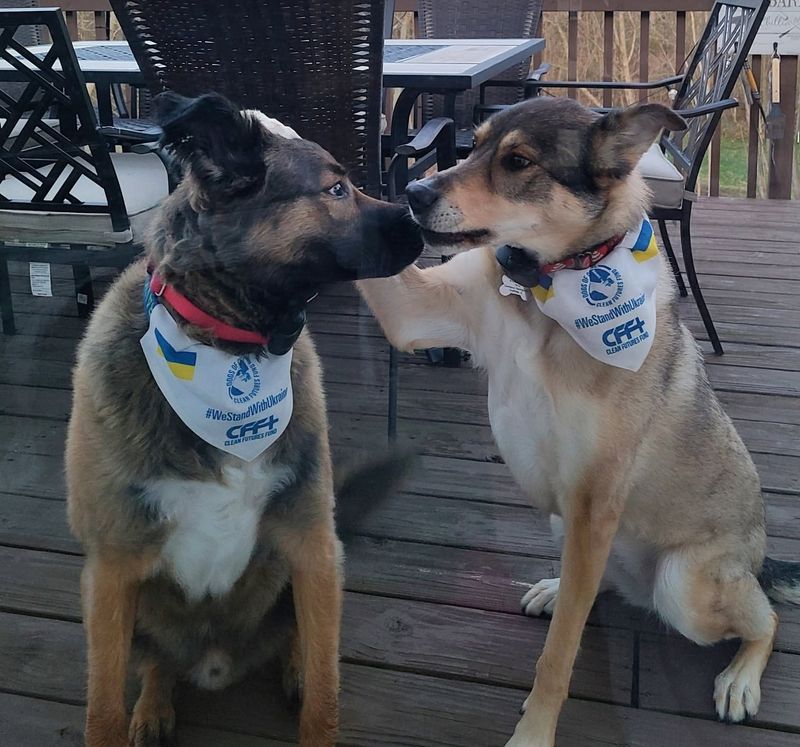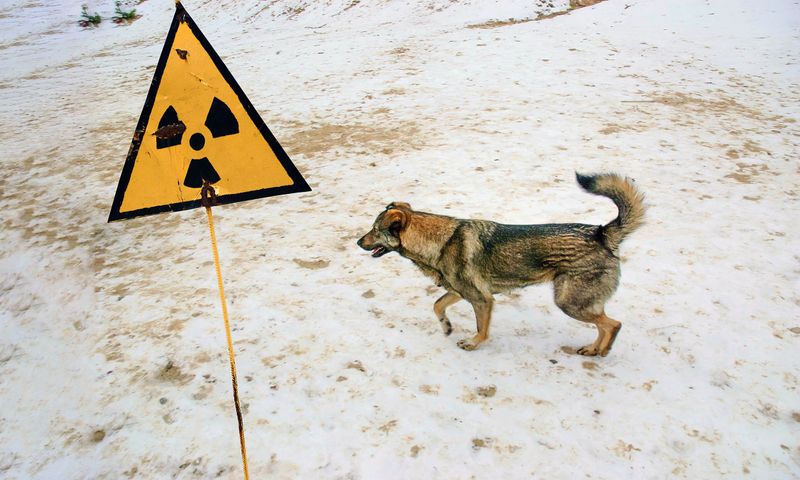Chernobyl, a place synonymous with nuclear disaster, has evolved into an unexpected haven for wildlife, particularly feral dogs. Living in the radioactive exclusion zone, these dogs present a unique insight into the effects of long-term radiation exposure on animals. Over 37 years since the catastrophic explosion, researchers and animal lovers alike are drawn to the resilience and adaptability of these canines. This blog post explores 19 unique insights into how radiation may influence the feral dogs of Chernobyl, providing a glimpse into the intersection of nature and nuclear science.
Genetic Mutations
The feral dogs of Chernobyl may experience genetic mutations due to prolonged radiation exposure. These genetic changes can manifest in various ways, such as unusual fur patterns or colors. While some mutations might be harmless, others could affect the health and longevity of these animals. Scientists study these mutations to understand how radiation impacts DNA and whether these changes can be passed on to future generations. This research helps unravel the complex interactions between radiation and living organisms, offering valuable insights into genetic resilience and adaptability.
Radiation Resistance
Feral dogs in Chernobyl have developed a remarkable resistance to radiation, surviving in an environment deemed uninhabitable by humans. This phenomenon piques the interest of scientists who study how organisms can adapt to extreme conditions. The dogs’ ability to endure high radiation levels without apparent immediate harm provides a unique opportunity to explore genetic and physiological adaptations. These findings could have implications for understanding radiation resistance in other species, including humans, potentially informing medical research and disaster response strategies.
Health Issues
Living in a radioactive environment poses significant health challenges for Chernobyl’s feral dogs. Common issues include weakened immune systems, increased susceptibility to diseases, and reproductive problems. Veterinary studies conducted in the exclusion zone aim to quantify these health impacts and develop strategies to mitigate them. By analyzing the health of these dogs, researchers gain insights into the long-term effects of radiation on mammals. This information is vital for preparing for future nuclear events and understanding how to protect both human and animal populations.
Behavioral Changes
Radiation may influence the behavior of feral dogs in Chernobyl, leading to changes in social interactions, foraging patterns, and territoriality. These behavioral shifts could be adaptations to the altered environment or stress responses to radiation exposure. Observing these behaviors offers scientists a window into the ecological and psychological impacts of living in a radioactive zone. Studying these changes helps in understanding animal resilience and the effects of environmental stressors on behavior, which can inform conservation efforts in other affected regions.
Dietary Adaptations
Living in an environment with limited resources, Chernobyl’s feral dogs have adapted their diets for survival. These dogs scavenge abandoned areas, consuming whatever they can find, from rodents to discarded human food. This adaptability in diet reflects their resilience and capacity to adjust to harsh conditions. Researchers study these dietary patterns to understand how radiation affects food availability and nutritional choices. Insights into these adaptations can inform ecological studies and contribute to the broader understanding of animal survival strategies in post-disaster environments.
Reproductive Changes
Exposure to radiation in Chernobyl may influence the reproductive patterns of feral dogs. Some studies suggest changes in litter size, fertility rates, and maternal behaviors. These reproductive changes could be direct results of radiation’s impact on biological systems or indirect effects of environmental stress. Understanding these patterns helps researchers assess the long-term viability of canine populations in contaminated areas. This knowledge is essential for wildlife management and conservation efforts, providing insights into how species adapt and thrive despite adverse conditions.
Social Structures
Feral dogs in Chernobyl exhibit complex social structures resembling those of wild canids. These structures are characterized by pack hierarchy, cooperation, and social bonds. The absence of human interference allows these social dynamics to evolve naturally, offering researchers a unique opportunity to study canine social behavior. Exploring these structures provides insights into the evolutionary aspects of sociality and the impact of environmental factors on social organization. This knowledge can be applied to understand social behavior in domestic dogs and other social animals.
Survival Strategies
Surviving in Chernobyl’s harsh, radioactive environment requires specialized strategies. Feral dogs have developed unique adaptations to cope with the challenges they face. These strategies include exploiting human-made structures for shelter, altering foraging techniques, and forming cooperative groups. By examining these survival tactics, scientists gain insights into the resilience and adaptability of species in extreme conditions. This research aids in understanding ecological recovery processes and informs conservation efforts in areas impacted by nuclear disasters.
Ecological Role
In the Chernobyl exclusion zone, feral dogs play an important ecological role. As top scavengers, they influence the distribution of resources and interactions among other wildlife. Their presence affects the behavior and population dynamics of various species, contributing to the ecosystem’s overall balance. Researchers study these interactions to understand how radiation alters ecological networks and the potential long-term consequences of these changes. Insights gained from these studies can guide conservation strategies and enhance our understanding of ecosystem dynamics in post-nuclear landscapes.
Radiation Effects on Lifespan
Radiation exposure in Chernobyl may affect the lifespan of feral dogs, though the impact is not fully understood. Some studies suggest that radiation could shorten lifespans by increasing disease susceptibility and impairing physiological functions. However, the exact relationship between radiation levels and lifespan remains a subject of ongoing research. Understanding how radiation influences longevity is crucial for assessing the risks posed by nuclear accidents to wildlife. This knowledge can inform future response strategies and contribute to the broader discussion on nuclear safety and environmental protection.
Human Interaction History
Before the Chernobyl disaster, dogs lived alongside humans within the city. These canines were pets, guardians, and companions to the residents. Following the evacuation, many were left behind, leading to a population of feral dogs that adapted to the abandoned environment. This history of human interaction influences their behavior and adaptability. Researchers explore how past domestication impacts current survival skills and social structures, offering insights into the long-term effects of human-animal relationships. This knowledge enhances our understanding of animal resilience and adaptability in post-disaster settings.
Adaptation to Urban Ruins
Chernobyl’s feral dogs have adapted remarkably well to life among urban ruins. They utilize abandoned buildings and infrastructure for shelter and navigation, exhibiting behaviors similar to urban wildlife. This adaptation to man-made environments highlights their resourcefulness and flexibility in the face of adversity. Studying these adaptations provides valuable insights into how animals can thrive in habitats altered by human activity, informing urban ecology research. This knowledge can guide wildlife management practices in cities and improve our understanding of species resilience in changing environments.
Radiation and Immune Function
Radiation exposure in Chernobyl may impact the immune function of feral dogs. Research suggests that chronic exposure to low-dose radiation could alter immune responses, making dogs more susceptible to infections and diseases. Scientists analyze blood samples and health data to assess these effects and understand the biological mechanisms involved. This research contributes to the broader understanding of radiation’s impact on immune systems, with implications for human healthcare and disaster preparedness. Insights gained could aid in developing strategies to protect populations in radiation-contaminated areas.
Learning from Chernobyl
Chernobyl’s feral dogs offer a unique opportunity to learn about life in a post-nuclear landscape. Researchers from various fields study these animals to understand the long-term effects of radiation on living organisms. This interdisciplinary research provides valuable insights into ecology, genetics, health, and behavior that can inform future environmental and radiation studies. By analyzing the adaptations and challenges faced by these dogs, scientists gain a deeper understanding of resilience and survival in extreme conditions, contributing to global knowledge on nuclear disaster recovery.
Conservation Efforts
Efforts to protect and care for Chernobyl’s feral dogs are ongoing, with various organizations involved. These initiatives focus on providing medical care, food, and shelter to the dogs, ensuring their well-being in a challenging environment. Conservationists aim to balance the needs of the dogs with the ecological dynamics of the exclusion zone. Understanding the impact of human intervention on this unique ecosystem is crucial for developing effective conservation strategies. These efforts highlight the importance of empathy and responsibility towards animals affected by human-induced disasters.
Educational Opportunities
Chernobyl’s feral dogs serve as an educational resource for students and researchers interested in nuclear science and ecology. Field studies and educational programs in the exclusion zone provide hands-on learning experiences about radiation’s effects on living organisms. These opportunities foster a deeper understanding of environmental science, conservation, and the responsibilities associated with nuclear technology. By engaging with this unique environment, students gain insights into the complexities of post-disaster recovery and the importance of preserving biodiversity in affected areas, inspiring future generations of scientists and conservationists.
Public Perception and Media
The media plays a significant role in shaping public perception of Chernobyl’s feral dogs. Documentaries, articles, and social media coverage raise awareness about their plight and the broader implications of nuclear disasters. This attention helps garner support for conservation efforts and stimulates interest in scientific research. However, media portrayal can sometimes emphasize sensational aspects, overshadowing the complex realities faced by these animals. A balanced representation is essential to convey accurate information and foster informed public discourse about radiation’s impact on wildlife and the environment.
Population Dynamics
Radiation exposure in Chernobyl has altered the population dynamics of feral dogs. Despite harsh conditions, these dogs have formed packs exhibiting social structures similar to their wild ancestors. The exclusion zone’s lack of human interference allows researchers to observe natural behaviors and population changes over time. Factors such as birth rates, survival rates, and pack hierarchy offer insights into how species adapt to challenging environments. Understanding these dynamics is crucial for wildlife conservation and management, particularly in areas affected by nuclear incidents.
